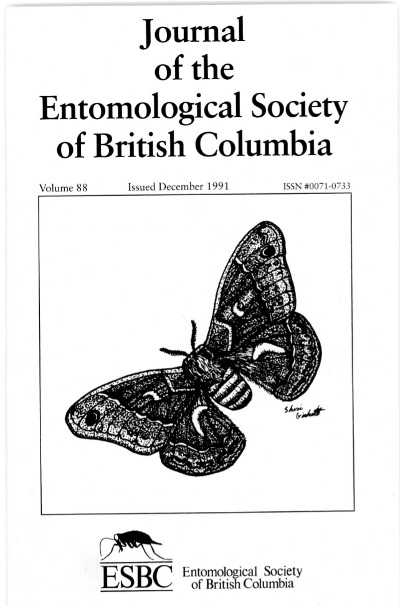Cuticular Netal Hardening of Mouthparts and Claws of some Forest Insects of British Columbia
Abstract
The presence of metals in mouthparts and claws of some forest insects associated with British Columbia conifers, particularly cone and seed pests, were detected and mapped by energy dispersive X-ray microanalysis. Zinc was concentrated in the mandibular cutting edges and claw tip s of larval lepidopterans (but not in adult mouthparts), in the mandibles and claws of larval and adult coleoplerans and in the mandibles of the hymenopteran, Megastigmus spermatotrophus. Calcium was the predominant metal in the mouth hooks of dipteran larvae. but minor peaks of zinc or manganese were present additionally in two spccies. Manganese occurred in the stylets of the hemipteran, Leptoglossus occidentalis, in the mandibles and claws of one coleopteran species, and with zinc in the mandibles of a clerid predator. The function of metal concentrations in spccific areas of these structures is probably related to hardening of cuticular regions in some instances and to some other biomechanical aspect of cuticular strengthening in other cases.Downloads
Issue
Section
License
Authors who publish with the Journal of the Entomological Society of British Columbia agree to the following terms:
-Authors retain copyright and grant the journal right of first publication with the work simultaneously licensed under a Creative Commons Attribution License that allows others to share the work with an acknowledgement of the work's authorship and initial publication in this journal.
-Authors are able to enter into separate, additional contractual arrangements for the non-exclusive distribution of the journal's published version of the work (e.g., post it to an institutional repository or publish it in a book), with an acknowledgement of its initial publication in this journal.
-Authors are permitted and encouraged to post their work online (e.g., in institutional repositories or on their website) prior to and during the submission process, as it can lead to productive exchanges, as well as earlier and greater citation of published work (See The Effect of Open Access).


